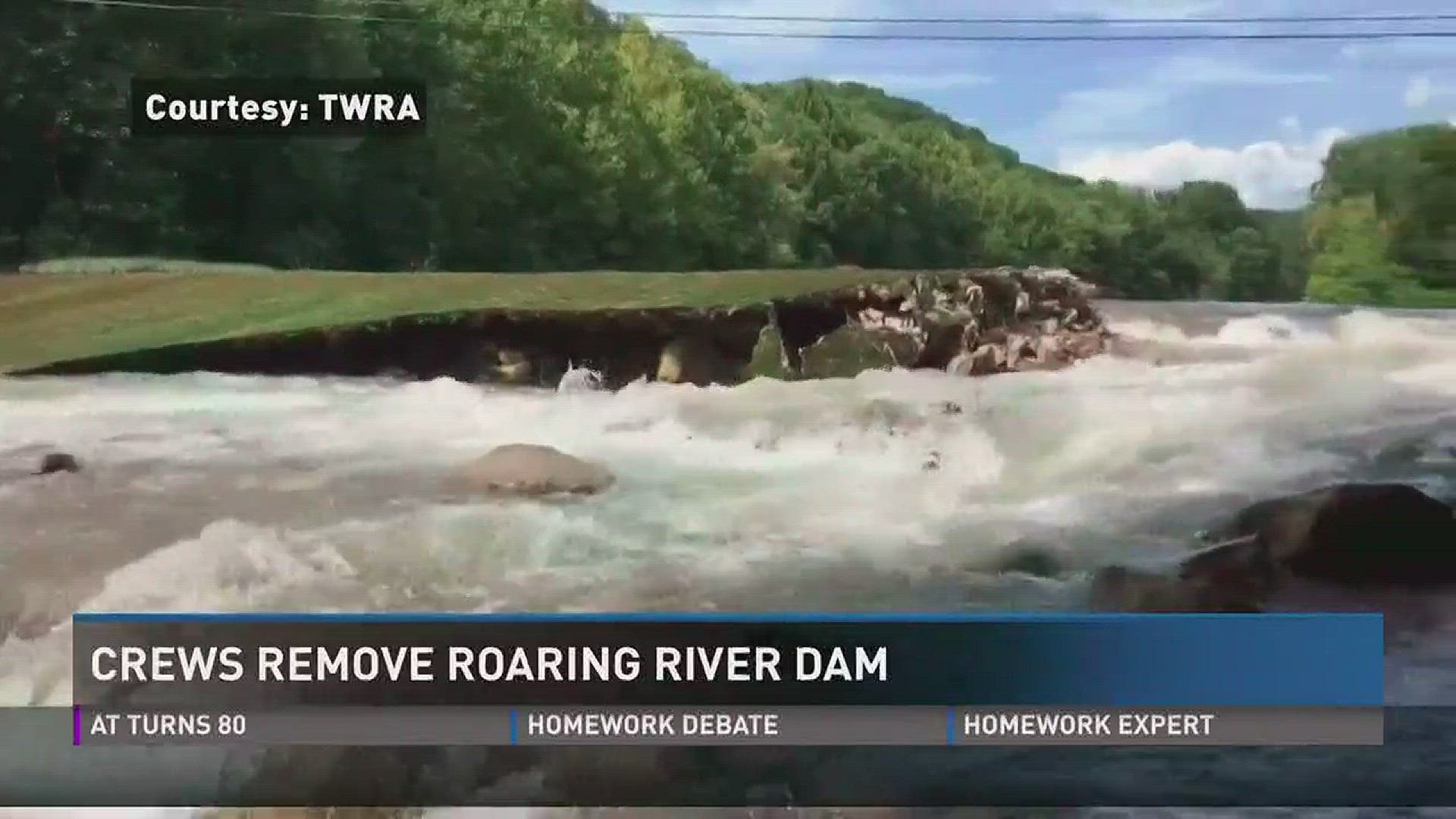Crews finished breaking down the Roaring River dam Tuesday, making it the largest Tennessee dam to ever be removed for river and stream restoration purposes.
The dam was roughly 220 feet across and 15 feet tall. It was located in Jackson County about five miles before the beginning of the lake formed by the Cordell Hull Dam.
The Roaring River Dam was built in 1976 by the U.S. Army Corps of Engineers. It was targeted for removal because the structure was eroding at its base in what is known as a “head cut,” creating a risk that the dam might have suddenly failed.
Rather than repair the dam, the Tennessee Wildlife Resources Agency and the Corps of Engineers determined that it would be better to remove the dam, which was originally built at TWRA’s request to keep reservoir species from migrating upstream into areas inhabited by stream fish.
After day 1 good progress made. Dam is draining well & will be ready for early start tomorrow. Excited about future of river! #tnwildlife pic.twitter.com/PGx7aOBfuW
— TWRA (@tnwildlife) July 31, 2017
Fish surveys have shown that the barrier was not effective, and it is no longer needed.
“With the dam failing, it has provided an opportunity to enhance the connectivity within the Roaring River Watershed,” said Mark Thurman, TWRA Region 3 Fisheries Coordinator.
Thurman said removing the dam will open up the river for fish such as white bass, sauger, smallmouth bass and redhorse. It will also benefit other species such as the eastern hellbender, whose numbers have declined across the species range.
Roaring River Dam removal underway! It's a good start to a two day process. Stay tuned for more. #tnwildlife pic.twitter.com/fw1xn2cCVb
— TWRA (@tnwildlife) July 31, 2017
“We know of more than 2,000 of these dams in Tennessee’s rivers and streams. Many have outlived their intended purpose and fallen into disrepair. There is a growing recognition that removing these old dams results in safer rivers for recreation and healthier habitat for wildlife,” said Rob Bullard, Tennessee and Cumberland Rivers Program Director with The Nature Conservancy.
Partners in the joint effort to remove the aging dam include TWRA, the Corps of Engineers, The Nature Conservancy, the U.S. Fish and Wildlife Service, the Tennessee Department of Environment and Conservation and the Southern Aquatic Resources Partnership.

